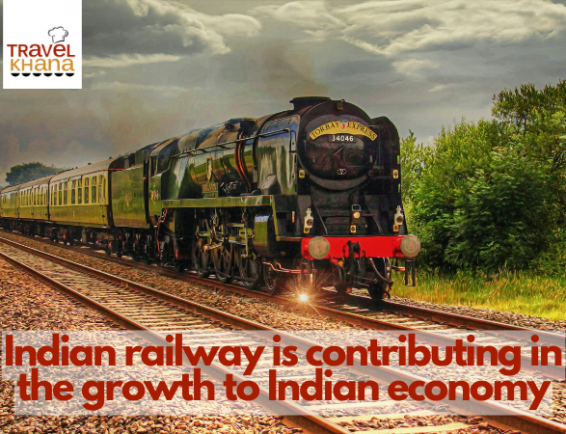How Indian Railways is Contributing to the Growth of the Indian Economy
Indian Railways plays a key role in the entire lower and middle-class travel segment. It is the most economical mode of transport among the prevailing modes of travel in India. India’s humble beginnings since 1853. Indian railways have now emerged as the main vehicle for the socio-economic development of the country. Indian Railways is a labor-intensive industry employing more than 13.6 million employees. The Indian Railways is one of the largest employers in India. Employment has been one of the most important objectives of development planning in India. Railways in India contribute significantly to employment. Rail transport has several advantageous features compared to road transport. It is six times more energy efficient than the road and four times more economical. Social costs in the form of environmental damage or deterioration of space are significantly lower with railways. Railway construction costs are approximately six times lower than road transport with a comparable traffic volume. It is the only major mode of transport capable of using all forms of primary energy.
Organizational Structure of Indian Railways
Indian Railways is a state-owned railway company in India with headquarters in New Delhi, India. It is owned and operated by the Government of India through the Ministry of Railways. Indian Railways has 114,500 kilometers (71,147 mi) of track, 65,000 kilometers (40,389 mi) and 7,500 stations. It has the fourth-largest railway network in the world after the United States, Russia, and China. How do Indian
Railways contribute to the economic development of the country.
- The service sector plays an important role in the economic development of India. Railways are an important part of the service sector and also, directly and indirectly, contribute to the economic development of the country.
- Indian Railways not only creates formal jobs but also generates a significant number of informal jobs through its forward and backward services. The service sector is gradually increasing its share of employment.
- Developing the capacity of existing lines will help transport more and more freight, increasing passenger traffic as well.
- Focus on improving the operating ratio, which will help better finance projects in the future.
- E-catering services in trains will boost India the growth of railways and in turn, create better job opportunities. This has proved to be a boon in terms of employment generation and in turn, supports the growth of the Indian economy.
- The massive expansion of the network through the diamond quadrilateral scheme will facilitate the movement of goods and reduce trading hours. This massive project aims to create a high-speed train network in India to connect four metro cities in India namely Delhi, Mumbai, Kolkata, and Chennai. In the first stage, using traditional technology, separate track corridors will be upgraded for train speeds of 160-200 km/h. In the second phase, key intercity corridors will be identified, and state-owned, public-private partnerships will develop state-of-the-art high-speed corridors up to 350 km/h. The goal is to develop at least 2,000 km long 4 corridors and at least 8 more corridors in different stages of development by 2020. Current development work is focused on the creation of six corridors:
- Delhi – Kolkata corridor: New Delhi – Aligarh – Agra – Kanpur – Lukhnow – Sultanpur – Varanasi – Buxar – Gaya – Patna – Dhanbad – Asansol – Bardwan – Kolkata
- Delhi – Mumbai corridor: New Delhi – Gurugram – Rewari – Jaipur – Ajmer – Bhilwara – Udaipur – Himmatnagar – Ahmedabad – Anand – Vadodara – Surat – Vapi – Boisar – Virar – Thane – Mumbai
- Mumbai – Chennai corridor: Thane – Navi Mumbai – Lonavala – Pune – Kolhapur – Belagavi – Hubballi – Davangere – Tumkur – Bangaluru – Banagarpet – Chennai
- Kolkata – Chennai corridor: Kolkata – Haldia – Cuttack – Bhubaneshwar – Vijayanagram – Vishakapatnam – Rajahmundry – Nellore – Chennai
- Delhi – Chennai corridor: New Delhi – Agra – Gwalior – Guna – Bhopal – Itarsi – Betul – Nagpur – Nizamabad – Hyderabad – Vijayawada – Ongole – Chennai
- Mumbai – Kolkata corridor: Thane – Nashik – Aurangabad – Akola – Nagpur – Durg – Raipur – Bilaspur – Rourkela – Kharagpur – Kolkata
- Social costs in the form of environmental damage or deterioration of space are significantly lower with railways.
- Railway construction costs are approximately six times lower than road transport with a comparable traffic volume.
It is the only major transport mode capable of using any form of primary energy. Thus we see that Indian Railways contributes to a major part of GDP through employment generation, freight collection, e-catering services, etc. Adding to the transparency, the recent move towards e-tendering will also help in assessing the profitability and contribution towards development on the whole.

